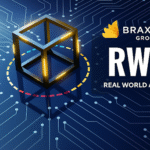How ‘DevOps as a Service’ is Transforming Software Deliveries?

DevOps as a Service (DaaS) is changing software delivery by providing managed automation, CI/CD pipelines, and scalable infrastructure, allowing your team to spend more time innovating and not worrying about operations. Organizations subscribing to DevOps processes using a cloud platform (e.g. AWS, Azure, GCP) will ultimately have the ability to deliver faster, more reliably. This Blog guide will provide some examples of how DaaS companies leverage automation, tools, and best practices in the software development lifecycle, with a range of workflows for new beginners to future roadmap strategies for 2025.
DevOps as a Service: The Game-Changer for Software Delivery
DevOps as a service (DaaS) is a cloud-based product that outsources DevOps methods and provides pre-set CI/CD pipelines, infrastructure management and monitoring. Sessions like Azure DevOps, or GitLab can provide end-to-end automation, which will drastically reduce the necessary in-house expertise. For example, a small startup can use AWS DevOps for automating deployments and release without hiring a dedicated ops team, saving the company money and increasing the pace of releases..
By demystifying complicated workflows, Data as a Service, or DaaS, fills the delivery gap. It incorporates technologies like Jenkins for CI/CD, Terraform for infrastructure, and Prometheus, for monitoring, providing enterprise capabilities to all teams. This democratization of DevOps will allow teams to deliver to market faster, and make Data as a Service, or DaaS a core piece of modern software development.
Efficient Development with DaaS
DaaS drives efficient development by automating repetitive tasks, allowing developers to focus on coding. Manual processes, such as testing or server setup, slow down delivery. DaaS platforms like GitLab automate these tasks, ensuring consistency. For instance, GitLab’s CI/CD pipelines can run tests and deploy code in minutes, reducing cycle times.
Efficiency also means cost savings. By leveraging DaaS, teams avoid investing in custom DevOps infrastructure. A small team can use Azure DevOps to manage pipelines at a fraction of the cost of building their own, making efficient development accessible and scalable.
Why Use DevOps Automation for Efficient Development
DaaS relies on automation, so why use DevOps automation for efficient development? Automation ensures reliability and speed, critical for software delivery. Automated pipelines in DaaS platforms eliminate errors like environment mismatches. For example, a DaaS provider can ensure staging and production environments are identical, reducing “it works on my machine” issues.
Automation also supports compliance. DaaS platforms enforce security policies, like automatic patching, ensuring audit-ready systems. This is vital for industries like finance, where compliance is non-negotiable, making DaaS a strategic choice for efficient development.
DevOps Automation for Beginners
For newcomers, DevOps automation for beginners in a DaaS context is approachable. DaaS platforms simplify setup—GitHub Actions, for instance, offers pre-built CI/CD workflows. Beginners can start by automating unit tests with tools, triggered on every code push. This builds confidence without requiring deep DevOps knowledge.
DaaS also provides learning resources. Platforms like Azure DevOps include tutorials, helping beginners master automation. For example, a novice can use Azure’s pipeline templates to automate deployments, leveraging DaaS to learn while delivering value.
CI/CD Automation in DevOps for Beginners
DaaS makes CI/CD automation in DevOps for beginners seamless. Continuous Integration (CI) automates code building and testing, while Continuous Delivery (CD) ensures deployable code. DaaS platforms like CircleCI offer intuitive interfaces. A beginner can configure CircleCI to run tests on every commit, catching bugs early.
Start small—automate a single test suite, then add linting or Docker builds. DaaS simplifies this with managed runners, eliminating server setup. This accessibility empowers beginners to adopt CI/CD, transforming delivery with minimal effort.
DevOps Automation Guide for Small Teams
DaaS is particularly effective for small teams, as mentioned in prior guidance on DevOps automation for small teams. Small teams have limited capacity, therefore complex DevOps setups are out of reach and will wrongly overextend their capacity or waste time. DaaS solutions such as GitLab consolidate CI/CD, monitoring, security, etc. with no friction. Small teams of five members can utilize GitLab and automate testing and deployments as if they were a legitimate responsible corporate entity with stakeholder support, competing for advancements and completion loops unimagined at scale.
Prioritize high-impact automation, like deployments. DaaS’s pay-as-you-go pricing, like AWS CodePipeline’s, ensures affordability. Documentation within platforms ensures knowledge sharing, making DaaS ideal for lean teams aiming to scale.
DevOps Automation for Agile Development Teams
Agile teams thrive with DaaS, as DevOps automation for agile development teams aligns with rapid iterations. DaaS automates testing and deployment, supporting frequent releases. For instance, an agile team using Jira can integrate Azure DevOps to automate builds and deployments, keeping sprints on track.
DaaS enhances feedback loops. Automated testing in GitLab CI provides instant results, enabling quick fixes within sprints. Slack integrations notify teams of pipeline issues, ensuring agility. DaaS thus empowers agile teams to deliver customer value faster while maintaining quality.
How to Implement DevOps Automation in Software Development
Thinking of how to use DevOps automation within software development in DaaS? Begin by mapping out your pipeline—code, test, deploy, monitor. Next, identify tasks you repeat, such as provisioning a server or application testing. DaaS platforms like AWS DevOps provide lots of tools to automate the pipeline: CodeBuild for Continuous Integration, CodeDeploy for Continuous Delivery, and CloudFormation for infrastructure.
Implement incrementally. Begin with CI to automate testing, then add CD for deployments. DaaS’s managed services simplify integration, requiring minimal setup. Track metrics like deployment frequency to measure impact, leveraging DaaS to streamline delivery.
How to Automate DevOps Workflows
To master how to automate DevOps workflows with DaaS, focus on version control, CI/CD, and infrastructure. DaaS platforms like GitLab provide Git integration for version control. Use their CI/CD pipelines to automate builds, tests, and deployments. For infrastructure, DaaS supports tools like Terraform, managed via platforms like AWS.
Example: Use GitLab to automate a pipeline that provisions AWS EC2 instances with Terraform, then deploys a Dockerized app. DaaS’s managed runners eliminate server management, making workflows seamless. Regularly optimize pipelines to maintain efficiency.
Continuous Integration Continuous Delivery
Continuous integration continuous delivery (CI/CD) is central to DaaS. CI automates code integration and testing, while CD ensures deployable code. DaaS platforms like Jenkins (via AWS) or GitLab CI simplify this. A pipeline might fetch code from Git, build a Docker image, run JUnit tests, and deploy to Kubernetes.
DaaS ensures scalability. For instance, Azure DevOps can handle thousands of builds daily, ideal for high-frequency releases. This reliability transforms delivery by reducing cycle times and improving quality.
Continuous Integration Pipeline
A continuous integration pipeline in DaaS automates code validation. GitHub Actions, offered by DaaS providers, can lint code with ESLint, run Mocha tests, and generate Codecov reports. This ensures high-quality code, reducing bugs and fostering collaboration.
Optimize pipelines with caching. A Node.js project can cache npm packages via DaaS runners, speeding up builds. DaaS’s managed infrastructure ensures reliability, transforming delivery by providing fast feedback to developers.
CI/CD Pipeline in DevOps
The CI/CD pipeline in DevOps via DaaS extends CI to deployments. AWS CodePipeline, a DaaS offering, fetches code from GitHub, builds with CodeBuild, tests with CodeStar, and deploys to ECS. Stages—source, build, test, deploy—ensure consistency.
Security is key. DaaS integrates Snyk to scan vulnerabilities during builds, failing pipelines if issues are critical. This ensures secure, rapid delivery, making DaaS a transformative force in software development.
DevOps Tools
DaaS leverages a rich set of DevOps tools. Git manages version control, while Jenkins, GitLab CI, and CircleCI handle CI/CD. Terraform and Ansible manage infrastructure, and Docker and Kubernetes orchestrate containers. Prometheus and Grafana, often included in DaaS, monitor performance.
DaaS platforms bundle these tools, simplifying adoption. For example, Azure DevOps integrates Git, CI/CD, and monitoring, reducing tool sprawl. This cohesion transforms delivery by streamlining toolchains.
Best DevOps Automation Tools for Efficient Development
Choosing the best DevOps automation tools for efficient development is easier with DaaS. GitLab CI offers robust CI/CD, Terraform excels in IaC, and Kubernetes manages containers. DaaS platforms like AWS provide managed versions, reducing setup time.
Evaluate open-source vs. managed tools. Jenkins is free but requires maintenance, while AWS CodePipeline, a DaaS solution, is fully managed. DaaS’s simplicity accelerates adoption, transforming delivery for teams of all sizes.
Tools for Configuration Management
Tools for configuration management like Ansible, Puppet, and Chef are integrated into DaaS. Ansible’s YAML playbooks, managed via platforms like AWS, automate server setup. For example, an Ansible playbook can install Nginx across servers, ensuring consistency.
DaaS prevents configuration drift. Puppet’s reporting, available in DaaS, audits configurations, ensuring compliance. This reliability transforms delivery by maintaining stable, scalable environments.
Configuration Management Tools in DevOps
Configuration management tools in DevOps streamline infrastructure. DaaS platforms support Ansible for configuration and Terraform for provisioning. Terraform can create AWS EC2 instances, and Ansible can install software, all managed by DaaS.
Integration with CI/CD is seamless. A GitLab pipeline, hosted on DaaS, triggers Ansible playbooks post-provisioning, automating infrastructure. This efficiency transforms delivery by ensuring reproducible environments.
Configuration Management Software
Configuration management software like Chef, Puppet, and SaltStack automates tasks. Puppet, via DaaS, enforces security policies, ensuring SOC 2 compliance. DaaS’s managed services reduce oversight, improving auditability.
Choose software based on needs. Chef suits complex enterprises, while SaltStack, offered by DaaS, is lightweight. DaaS’s staging environments ensure error-free rollouts, transforming delivery reliability.
Infrastructure as Code
Infrastructure as code (IaC) defines infrastructure in code, managed by DaaS. Terraform, supported by AWS CloudFormation, creates AWS VPCs with subnets and EC2 instances, versioned in Git. DaaS ensures consistency across environments.
IaC speeds provisioning. DaaS can spin up test environments in minutes, not hours. Versioned IaC enables rollback, transforming delivery by simplifying recovery from misconfigurations.
Infrastructure as Code in DevOps Automation
Infrastructure as code in DevOps automation integrates IaC into DaaS pipelines. A GitLab pipeline can apply Terraform plans, then deploy apps to new environments. DaaS’s managed runners simplify execution, ensuring reliability.
IaC optimizes costs. Terraform, via DaaS, defines auto-scaling groups, reducing cloud expenses. Regular IaC audits, supported by DaaS, enhance efficiency, transforming delivery economics.
Using Kubernetes for DevOps Automation
Using Kubernetes for DevOps automation via DaaS simplifies orchestration. Kubernetes, managed by AWS EKS or Azure AKS, automates scaling and load balancing. A cluster can scale pods based on CPU usage, ensuring performance.
Helm, supported by DaaS, packages Kubernetes configurations. A Helm chart deploys apps across environments, and DaaS’s CI/CD integration automates the process, transforming delivery speed and reliability.
DevOps for Microservices
DevOps for microservices thrives with DaaS. Microservices require independent deployments, managed by DaaS pipelines and Kubernetes. A GitLab pipeline deploys microservices to AKS, while Istio, supported by DaaS, handles communication.
Monitoring is critical. DaaS includes Jaeger for tracing and Prometheus for metrics, ensuring performance visibility. Linkerd, via DaaS, encrypts service communication, transforming microservices delivery with security and scalability.
Cloud-Based DevOps
Cloud-based DevOps powers DaaS with platforms like AWS, Azure, and GCP. AWS CodeBuild, CodeDeploy, and EKS, all DaaS offerings, streamline CI/CD and orchestration. Temporary test environments, spun up via DaaS, save costs.
Managed services like AWS Lambda enable serverless deployments. Azure’s compliance certifications suit healthcare, while GCP’s AI tools enhance data-driven DevOps. DaaS’s flexibility transforms delivery across industries.
DevOps Service Providers
DevOps service providers like AWS, Microsoft, and GitLab power DaaS. GitLab’s all-in-one platform, a DaaS solution, includes CI/CD, monitoring, and security, reducing complexity. AWS offers extensive services, while Microsoft excels in enterprise integration.
Evaluate providers via pilots. DaaS’s managed services ensure scalability, transforming delivery by aligning with compliance and multi-cloud needs. This reliability makes DaaS a strategic choice.
DevOps Automation Best Practices for 2025
DevOps automation best practices for 2025 with DaaS include AI-driven automation and GitOps. AWS Forecast, via DaaS, predicts scaling needs, optimizing Kubernetes clusters. ArgoCD, a DaaS-supported GitOps tool, syncs configurations, ensuring reliability.
Security is paramount. Snyk, integrated into DaaS pipelines, scans vulnerabilities. Regular training on trends, facilitated by DaaS platforms, keeps teams competitive, transforming delivery with cutting-edge practices.
CI/CD Automation
CI/CD automation in DaaS ensures rapid, reliable releases. GitLab CI, a DaaS offering, automates builds, tests, and deployments. A pipeline might lint with ESLint, test with Mocha, and deploy to ECS, with Snyk ensuring security.
Optimize with caching and parallelization. DaaS’s managed runners speed up builds, providing fast feedback. This efficiency transforms delivery, enabling teams to iterate quickly and deliver quality software.
Conclusion
DevOps as a Service is transforming software deliveries by providing managed automation, scalable infrastructure, and seamless CI/CD pipelines. From CI/CD automation to infrastructure as code and Kubernetes, DaaS empowers teams to deliver faster and more reliably. Whether you’re a beginner, part of a small team, or scaling microservices, DaaS simplifies DevOps. Platforms like DevSecCops.ai offer resources to integrate security into DaaS workflows, ensuring secure development. Adopt DaaS, leverage the right DevOps tools, and transform your delivery pipeline by 2025.

Braxons Group: Liquidity Protocols for RWA and Yield Strategies — Bridging Real Assets with DeFi

Do I Need a Business License for My Ohio LLC

Unlocking Niche Audiences Through A Strategic Market Segmentation Service

Accelerating drug discovery through the DEL-ML-CS approach

AI in Marketing Is No Longer a Buzzword — It’s the Strategy

Overcoming frustration in coding problem‑solving

How Nicepage CSS Templates Simplify Website Design for Everyone

Mastering Modern Content Strategy with the Ben Stace Semantic SEO Writing Tool








